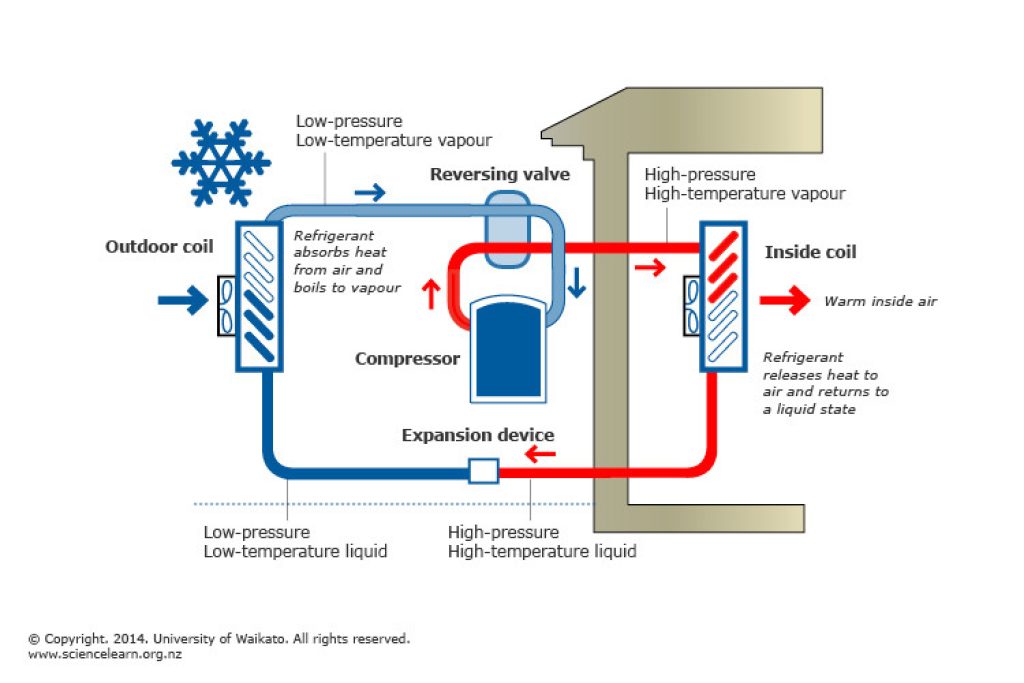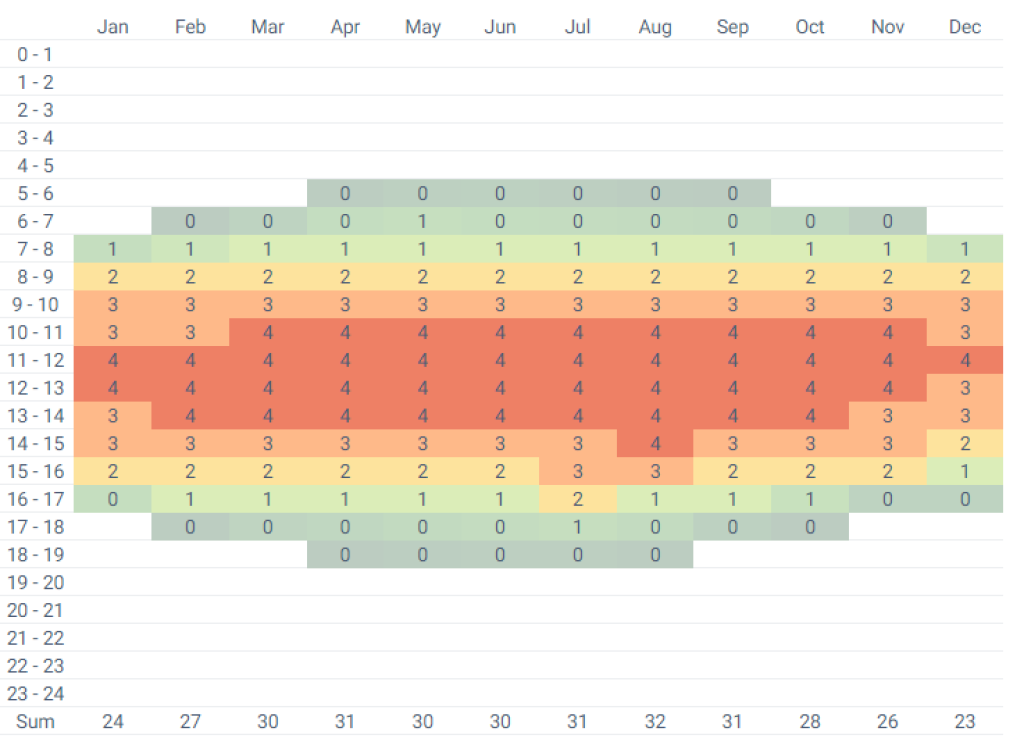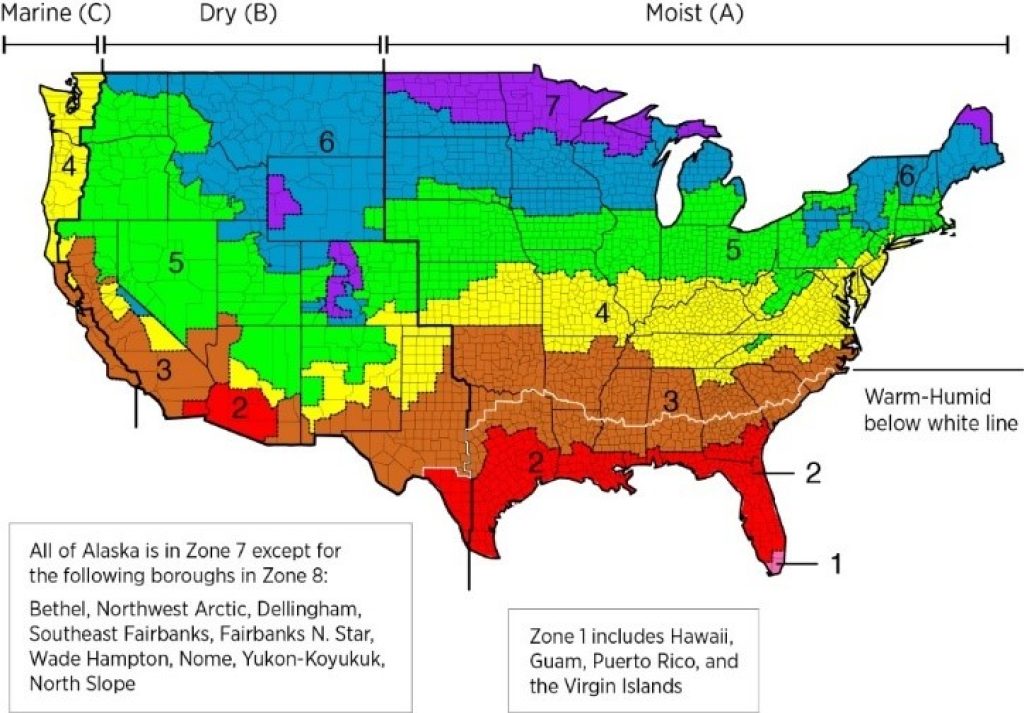Residential solar panels can run any household application, from mini speakers to a large heat pump.
The latter has gained popularity in recent times, with many homeowners looking for alternative household heating methods in the form of geothermal or air-source heat pumps.
In this article, we take a closer look at heat pumps, their energy usage, and the number of panels you need to power one.
Table of Contents
Can solar panels run a heat pump?
Heat pumps and solar panels — two sustainable solutions for home comfort and power generation.
The latter form part of modular photovoltaic (PV) systems, ranging from a few watts to thousands of kilowatts.
Naturally, a commercial solar system with a power output ranging in the thousands can easily power a single heat pump, but that’s not what we’re discussing here.
You want to know whether a residential solar array can power a heat pump. Indeed, solar panels can run a heat pump, even the most powerful ones on the market. What determines this, though, is the size and number of panels you have available to you.
Now, let’s look at this in greater detail by reviewing how a heat pump works and how a solar panel produces electricity.
What is a heat pump?
Heat pumps are the future of HVAC systems (Heating, Ventilation, Air Conditioning). They are reversible systems that can cool or heat your home.
A heat pump is simply a heat exchanger between the interior of your house and the air outside. It works like a refrigerator, with a compressor and a cooling/heating fluid.

Source: University of Waikato
Heat pumps are more efficient than traditional air conditioning units as they don’t generate heat. Instead, they “move” heat through their exchanger system.
That said, they still require electricity (800W to 5,000W) to cool or heat a home properly.
What is a solar panel?
A solar panel is a power generator that converts sunlight into electricity. You’ll find solar panels ranging from 20W up to 600W.
You can connect each unit to create a solar system with a much larger power output — the average size in the U.S. is 6kW.
However, a solar panel’s actual power output rarely reaches its maximum rated value. It varies according to the time of day and the seasons in real-world conditions.
For a 6kW solar system in San Francisco, California, the power output reaches a maximum of 4kW–5kW (10 am–2 pm).

Source: Global solar atlas
How many watts does a heat pump use?
If you’re considering buying a heat pump, be prepared to find little or no information on its power requirements.
Lucky for you, we’re about to provide you with the formula for calculating the number of watts a heat pump uses based on its size and energy efficiency.
The power consumption —in watts — of a heat pump depends on two major factors:
- Heat pump size: This capacity is rated in British Thermal Units (BTU). It varies from 8,000 BTU for the smallest models to more than 60,000 BTU for centralized units.
- Energy efficiency: On your heat pump label, you’ll find two figures:
- Seasonal Energy Efficiency Rating (SEER).
- Energy Efficiency Rating (EER).
The higher those numbers are, the more efficient your heat pump and the lower its electricity consumption.
Calculating the number of watts a heat pump uses
To calculate a heat pump’s wattage, you’ll need its heating capacity — in BTUs — and its SEER and EER ratings.
If the EER rating is indicated on your heat pump label, then follow the equation below:
Total Wattage = Capacity (In BTUs) ÷ EER
If you only have the SEER rating, then you’ll need the following extra calculation step to extract the EER rating:
EER = −0.02 × SEER² + 1.12 × SEER
For example, Comfortmaker’s Coastal heat pump has a cooling capacity of 28,000Btus (2.4 tons), SEER of 15 and EER of 12.5.
Its power consumption is: 28,000/12.5= 2,240W
The same cooling capacity with a slightly less efficient unit (EER of 11) would result in a power consumption of 2,545W. That’s a 13% increase that will directly impact your electricity bill.
Table
We applied our formula for different heat pump capacities with efficiency ratings ranging from 16–22:
| Heat pump capacity | Power @16 SEER | Power @18 SEER | Power @20 SEER | Power @22 SEER |
| 1 ton (12,000 BTU) | 938W | 877W | 833W | 802W |
| 1.5 ton (18,000 BTU) | 1,406W | 1,316W | 1,250W | 1,203W |
| 2 ton (24,000 BTU) | 1,875W | 1,754W | 1,667W | 1,604W |
| 2.5 ton (30,000 BTU) | 2,344W | 2,193W | 2,083W | 2,005W |
| 3 ton (36,000 BTU) | 2,813W | 2,632W | 2,500W | 2,406W |
| 3.5 ton (42,000 BTU) | 3,281W | 3,070W | 2,917W | 2,807W |
| 4 ton (48,000 BTU) | 3,750W | 3,509W | 3,333W | 3,209W |
| 4.5 ton (54,000 BTU) | 4,219W | 3,947W | 3,750W | 3,610W |
| 5 ton (60,000 BTU) | 4,688W | 4,386W | 4,167W | 4,011W |
How many solar panels do you need to run a heat pump?
The smallest heat pump only requires three x 500W solar panels to run correctly. Larger centralized units would need a complete 6,000W solar system 6,000W (12 x 500W panels) as a minimum requirement.
To calculate the number of solar panels you need to run a heat pump, you’ll have to gather the following information:
- Your climate zone.
- The size of the space you want to heat.
- Your solar electricity production potential

Source: 2012 IECC – International Energy Conservation Code
| Climate Zone | BTU/Sq.Ft |
|---|---|
| Zone 1 | 30 BTU/sq.ft |
| Zone 2 | 35 BTU/sq.ft |
| Zone 3 | 40 BTU/sq.ft |
| Zone 4 | 45 BTU/sq.ft |
| Zone 5 | 50 BTU/sq.ft |
| Zone 6 | 55 BTU/sq.ft |
| Zone 7 | 60 BTU/sq.ft |
Example
San Francisco, California, falls under climate Zone 3. You’ll need a heating capacity of 40 BTU/sqft. For a 1000 sqft house, you’ll need a heat pump with a heating capacity of 40,000 BTU/h.
A 40,000 BTU/h heat pump with an efficiency rating of 20 (SEER) will have approximately 3kW of power.
This heat pump will only run at full power some of the time. Let’s say it’ll run around 6 hours daily, depending on the outside temperature.
In this scenario, it’ll use approximately 18kWh per day to heat your house during winter in San Francisco.
Calculate your solar energy potential
We recommend using our solar calculator to estimate your solar electricity production potential. You’ll only need your address and the size of your solar system.
You can apply the formula below:
Number of solar panels = Daily heat pump energy needs / solar energy production potential
During San Francisco’s winter months, you can expect to produce 3.45kWh per day for every kW of solar panels. Consequently, to cover your heat pump’s electricity needs, you’ll need 5.2kW of solar panels — 18 / 3.45 = 5.2kW.
That’s equivalent to 11 x 500W solar panels (5.5kW).
Note to our readers: All figures are average values. Multiple external factors can influence the energy consumption of your heat pump —outside temperature, house thermostat temperature, etc.
Final thoughts
Heating and cooling account for around 65% of all domestic energy use in the U.S. More specifically, space heating is close to 30%.
A heat pump is regarded as the most efficient HVAC technology. It can cut your energy bill by a factor of 2–3.
Heat pumps are powerful appliances, ranging from 800W to more than 5,000W, but like most domestic appliances, you can power with solar panels as long as you have the appropriate number available.
As a rule of thumb, a heat pump needs between 3–12 500W solar panels.
Finally, remember that heat pump energy use depends on external factors such as outside temperature, house temperature, and time of the year.

